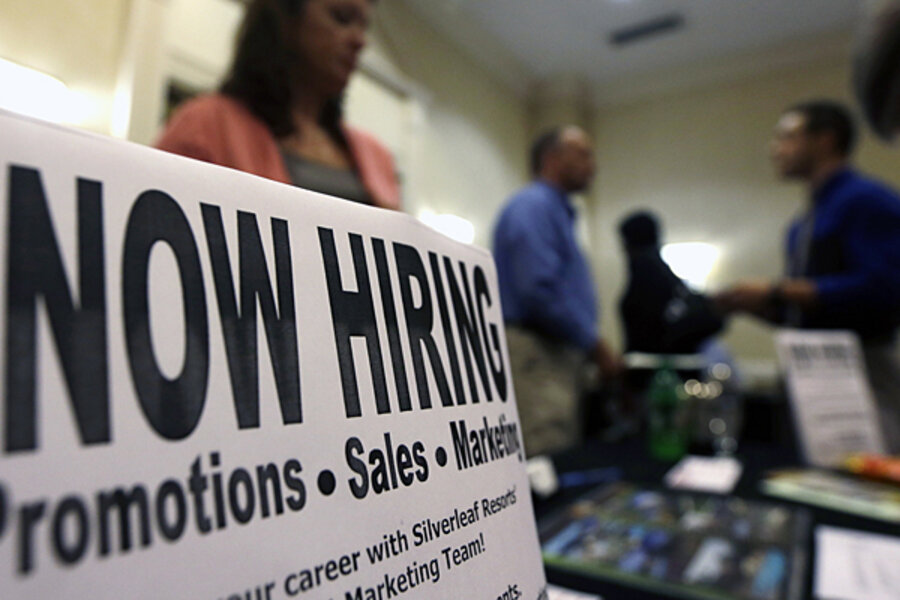Employment report: more jobs, less pay
Loading...
The two most important trends, confirmed in today’s jobs report from the Bureau of Labor Statistics, are that (1) jobs slowly continue to return, and (2) those jobs are paying less and less.
Today’s report showed 171,000 workers were added to payrolls in October, up from 148,000 in September. At the same time, unemployment rose to 7.9 percent from 7.8 percent last month. The reason for the seeming disparity: As jobs have begun to return, more people have been entering the labor force seeking employment. The household survey, on which the unemployment percentage is based, counts as “unemployed” only people who are looking for work.
As I’ve said, you have to take a single month’s report with a grain of salt because the job reports bounce around a great deal, and are often revised. Last month the BLS announced that 114,000 new jobs were created in September. Today the BLS revised that September figure upward to 148,000.
Overall, the jobs trend is in the right direction. The President and Democrats can take some comfort.
The most disturbing aspect of today’s report is the continuing decline of wages. Average hourly earnings climbed 1.6 percent in October from the same time last year. That’s not enough to match the rate of inflation – meaning that hourly earnings continue to drop in real terms.
It’s also the smallest gain since comparable year-over-year records began in 2007, before the Great Recession. Earnings for production workers – about 80 percent of the workforce — rose only 1.1 percent in the 12 months to October. That’s way behind inflation, and the weakest wage growth since the BLS began keeping records on wages in 1965.
The biggest challenge ahead isn’t just to get jobs back. They’re coming back. It’s to raise the wages of most Americans.
This isn’t a new challenge. The median wage has been flat for three decades, when you adjust for inflation. Since 2000 it’s been dropping.
What does all of this have to do with the upcoming election? Plenty. Some of the biggest wage losses over the last several decades have been among white men who haven’t attended college. And, not coincidentally, they’re the ones who have been abandoning the Democrats in droves.
Three decades ago, non-college white men were solidly Democratic. Many of them were unionized. They had jobs that delivered good middle-class incomes.
But over the last three decades they stopped believing the Democratic Party could deliver good jobs at decent wages.
Republicans have done no better for them on the wages — in fact many policies touted by the GOP, such as its attack on unions, have accelerated the downward wage trend.
But Republicans have offered white non-college males the scapegoats of racism and immigration — blaming, directly or indirectly, blacks and Latinos — and the solace of right-wing evangelical Christianity. Absent any bold leadership from Democrats, these have been enough.






